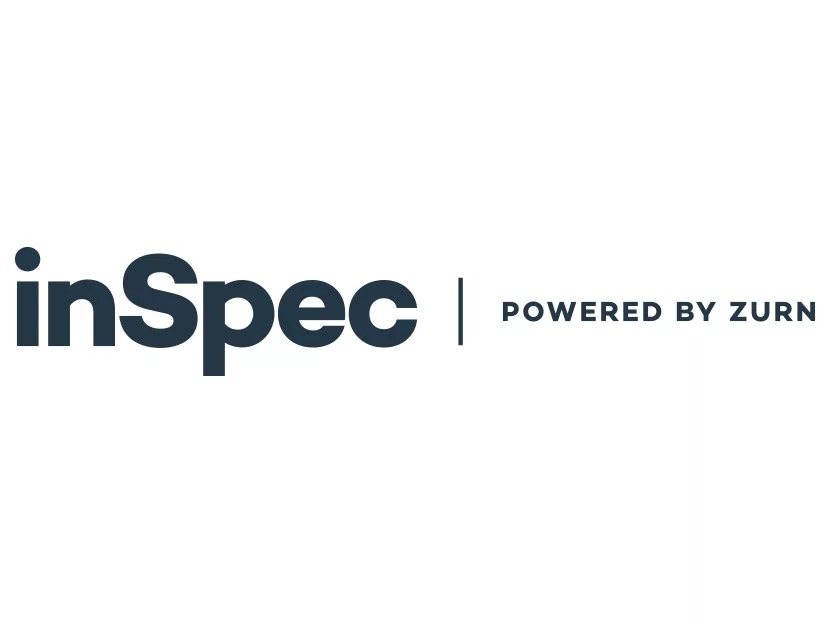Who has time to search site after site for products, print or scan specs, and piece together solutions that may not even be compatible? It’s a pretty straightforward question, with a pretty straightforward answer – not most engineers! The Zurn team recognized that and has been focused on developing a platform that will make the lives of plumbing engineers just a little less complicated. With the official launch of inSpec, powered by Zurn just last month, Dave Krohn, director of Digital Marketing & Communications, sat down with us to talk about the key benefits of Zurn’s newest resource for plumbing engineers.
Sharon J. Rehana (SJR): What is inSpec, powered by Zurn, and why should plumbing engineers be interested?
Dave Krohn (DK): inSpec, powered by Zurn, is a digital specification platform designed for plumbing engineers.
Up until now, the specification process was time-consuming and cumbersome. It often required combing through old project binders, scanning product specs one by one, or searching multiple sites to build configurations.
Our tool simplifies the process. Users can build as many projects and configurations from Zurn’s complete line of plumbing solutions – all in the portal and updated in real time. All projects are managed in one place and users can edit, share and copy projects with a few simple clicks. From there, they can download their submittal package, send p-schedules/spec sheets or build their basis of design all within the platform.
SJR: What was the turning point in which the developers at Zurn decided there is this need and we can create a solution?
DK: Making the specification process easier has always been a focus at Zurn. Several years ago, Zurn launched an extremely innovative specification solution for its time, called the Zurn One System specifier. This really cracked the door into developing a full-fledged digital specification platform. As technology evolved and new demands surfaced from engineers, we decided it was time to modernize our digital specification technology. After spending nearly one year with various engineering firms to understand their requirements, we brought a prototype to market in January of 2018. The platform will continue to advance in capabilities, but overall, we’re already receiving positive feedback and excitement around its functionality.
SJR: What have been some of the challenges in developing the tool?
DK: The product data and logic in the tool are quite remarkable. While this makes inSpec worthwhile, it requires a lot of work and resources, from gathering the data to coding to testing functionality. Our product, engineering, marketing and development teams rallied together to make it all seamless.
SJR: Has the tool been tested in the field, and if so, what has been the feedback?
DK: If you think you have something flawless the first time, you aren’t dealing with technology. We certainly tested and then some. We visited multiple engineering firms and reached out to ASPE’s Young Professionals (AYE). These are the experts. They delivered some really helpful feedback surrounding the tool – some kinks we worked through and others are capabilities we’re looking into developing for future releases. Overall, we’re confident and happy with the reactions we’ve received.
SJR: What has been some of the feedback you plan to implement in the next version of the tool?
DK: For feedback, your best-case scenario isn’t crickets, but rather a consistent voice. These are the four areas we were asked to develop in our future releases:
- Tagging and filling out all spec sheets based on selections;
- Building a Revit version of the p-schedule;
- Adding pricing into the tool; and
- Sending notifications through the platform.
We’re in the process of making all of the above happen within the next year.
SJR: What are the five key benefits of using inSpec? Can you talk about the benefit and then elaborate on how it can be applied?
DK: The benefits include easier specifying, having a project-based tool, having the engineer’s basis of design, ease of collaboration, and full submittal package capability.
- Easier Specifying: Engineers can specify products through a guided configuration process. They can add unlimited configurations to any project and make changes without losing where they left off.
- Project Based Tool: Users can create unlimited projects and access them at any time. They can also copy a past project to create a new one without starting from scratch.
- My Basis of Design: Rather than adding a configuration to a project, users can also add configurations to their basis of design in the tool. They can then copy configurations from their basis of design to a new or existing project at any point.
- Collaborative: It’s nice to double check work or bounce ideas. Users can share projects with colleagues from their company to gather feedback and collaborate. Recipients must have the same company email address, as a security measure.
- Full Submittal Package: When all is said and done, users can download the submittal package, including the p-schedule, spec sheets, masterspec and links to BIM files. From there, they simply email the spec sheets and p-schedules to collaborators, inside or outside of the organization. The same company email address is not mandatory for this functionality.
SJR: Can you walk us through the process of sharing a project? Can those who have access make changes, or just view the project?
DK: The process is actually very simple and collaborative. First, users click the share icon from the project dashboard or project list page. Then, they type in the email address of who they want to receive the project, along with a customized message if they choose. The recipient(s) will receive an email notification that a project has been shared with them. Once they register or log in, they will see the project in their “Shared Projects” list. From there, the recipient(s) can add or edit configurations; the project owners can disallow access at any time. Projects can only be shared with people who feature the same @companyname email domain. Projects cannot be shared with any user who uses a public email domain (Gmail, Hotmail, etc.).
SJR: inSpec is a great tool for plumbing professionals who want to specify Zurn products. Are there plans to integrate a platform that allows access to other manufacturers, particularly if it is a product Zurn does not manufacture?
DK: For now, the platform will only support Zurn products. Zurn’s expansive portfolio covers the vast majority of specified plumbing products and our focus has been developing the best experience to support these products.
To find out more about inSpec, visit inspec.zurn.com. The product will be showcased at the 2018 ASPE Convention & Expo held in Atlanta on Sept. 28 – Oct. 2.










